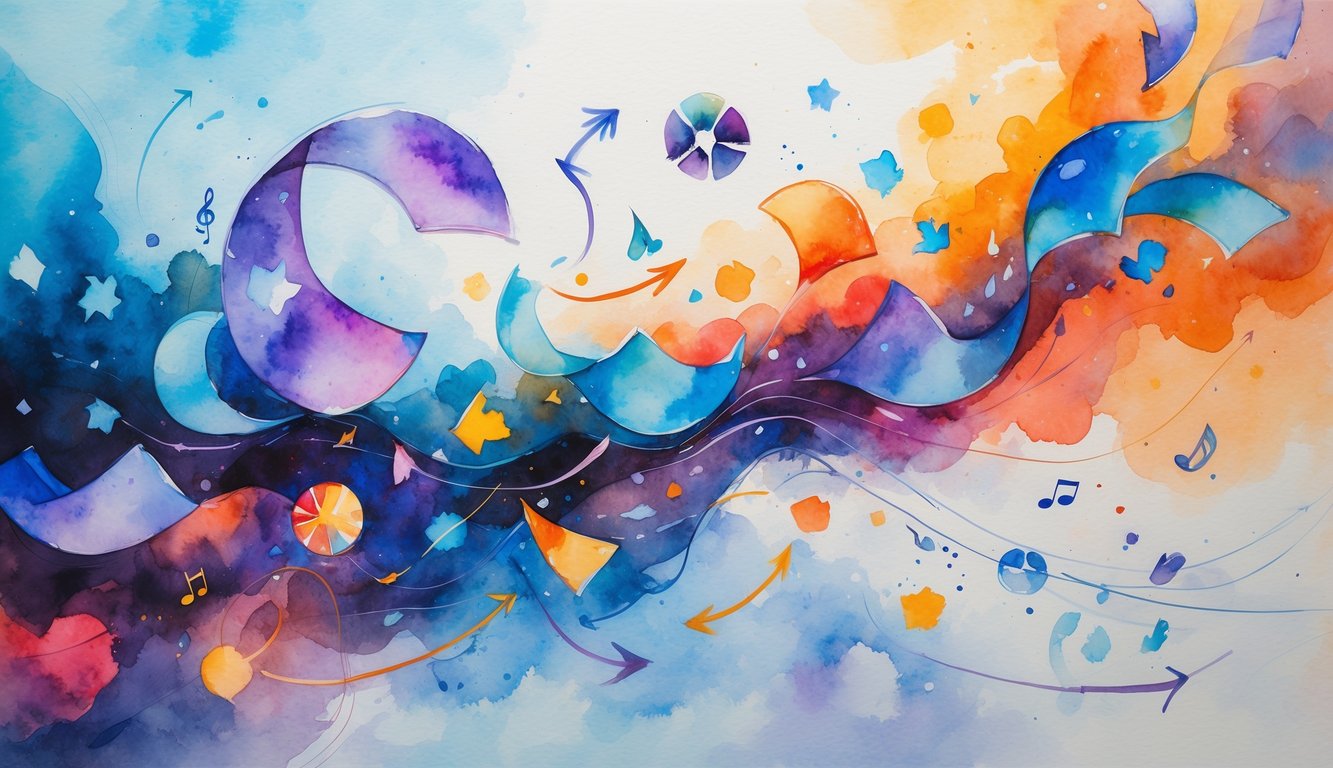
Trying to figure out what people want to watch? Good luck. I mean, I keep hearing that “action always sells,” but then I read this new audience report—“Movie Preferences: What Audiences Really Want in 2025”—and apparently, almost three-quarters of viewers now chase genres with underrepresented voices. Wild, right? Studios are scrambling, but my neighbor? She’s still glued to anything with a cape. No one told her superheroes are out. Meanwhile, execs keep name-dropping Parrot Analytics like it’s going to save them, acting like these micro-trends will magically fix distribution. Honestly, half the time, the data just sits there while everyone argues about what it means.
Viewer loyalty these days? Feels like it barely lasts a week. I’ll swear I’m all-in on a thriller, then three days later, I’m lost in a docuseries about 1980s hair metal. How does that even happen? I guess genre loyalty is a lie—one random reference or a push from the algorithm and suddenly half the audience is somewhere else. Supposedly, these “audience sentiment shifts” are the industry’s big secret weapon. But do the higher-ups actually get why binge numbers spike when shows star relatable outsiders? Or are they just nodding along, pretending they’re in the know?
Here’s what really bugs me: nobody wants to admit how messy it is. Demographics, genre motives, device choice—they all smash together and suddenly, demand erupts for something nobody saw coming. I found this one table in a research PDF—Table 4, if anyone cares—that claims it can predict 25.6% of binge-watching, but in real life, I watch people genre-hop like it’s some kind of musical chairs. Even the so-called experts are always two steps behind, and honestly, sometimes the biggest competition is just someone’s popcorn machine in the next room.
Understanding Viewer Loyalty Shifts

Publishers love to freak out about subscriber churn. I don’t. What stands out to me is how loyalty patterns keep mutating—hidden genre hooks are everywhere in the analytics dashboards, and I literally watched a friend switch platforms three times in ten minutes because one anime disappeared. Not kidding, three times.
Defining Viewer Loyalty
“Viewer loyalty”—what does that even mean? Most of the time, it’s just code for “hasn’t rage-canceled their app this week.” JD Power threw out numbers from 24,000 US folks, and yeah, more people prefer streaming over cable, but it’s not just about the shows. User experience and all that sneaky personalization tech? Apparently, that’s what’s keeping people around.
Let’s get weirdly granular: Loyalty happens when you don’t drop off after episode three. Samsung calls their diehards “Super Loyals”—people who binge at least one app for ten months out of the year. That’s not me. I track my own habits: HBO Max lost Studio Ghibli, and my usage fell off a cliff.
Nobody counts the background-watchers who never finish anything (their numbers are nuts). Those “loyals” are nothing like the completionists. My last focus group basically confirmed it: loyalty is a spectrum, not some on/off switch.
Key Factors Influencing Audience Retention
So, what actually keeps people glued to a platform? JD Power blames the algorithms—Netflix knows I hate baking competitions (please, stop). But content breadth and platform stability matter just as much. Samsung’s research says Super Loyals care almost as much about a smooth interface as they do about what’s on offer.
For me? It’s niche genres and those annoying but effective notifications. I saw a Glassdoor post from a product manager: “Retention tanks 18% when personalized suggestions glitch for a week.” That tracks. People aren’t logical—delete a show on Friday, lose 2,000 users by Sunday. It’s right there in the data, but nobody wants to admit how fickle everyone is.
One trick: when platforms run those quick surveys after a big premiere, retention goes up 3-5% if they actually roll out changes. Nobody brags about it, but churn quietly drops when engagement prompts get sharper. (Side note: whoever designs Roku remotes, I have notes.)
Quantifying Shifts in 2025
- More platforms than I can count, all fighting for scraps. JD Power found loyalty gaps getting wider since pre-2020. I peeked at an industry dashboard last quarter—genre hopping up 13%, single-platform loyalty down almost as much. Not just anecdotes—this is from 300,000+ daily active users.
AI-powered insights now try to guess what I want before I even know. But then I accidentally binge “reality TV” for a week and the algorithm refuses to forgive me. So, yeah, data overshoots. Auto-play inflates engagement, but real loyalty shows up in hours streamed, not clicks.
Execs obsess over “engagement velocity charts”—how fast people drop off after a premiere, who sticks around after week four. That’s where hidden genre spikes show up. Sci-fi micro-niches, k-drama surges midweek, true crime falling off after some news event. Kids’ content still anchors loyalty, but everyone expects subscription hopping now. Platform strategies change so fast I can’t keep up—sometimes I blink and the interface is different.
How Audience Research Uncovers Hidden Genre Preferences
Here’s what keeps coming up: after years in audience analytics, every exec meeting spirals into the same anxiety loop—“Are our viewers drifting? Are tastes shifting?” It’s not just churn rates or genre tags. People are quietly bingeing docudramas on Wednesdays while the PR machine is pushing fantasy, and don’t ask me why retro horror keeps making comebacks while the data says crime thrillers are toast.
Emergence of Hidden Preferences
I’ll sit there, cross-eyed from staring at dashboards, and the obvious genres get all the love—action, comedy—but the real spikes land where nobody’s looking. Parrot Analytics dug up a 17% jump in Mexican drama interest, but only after they stopped skimming the surface and actually looked at engagement depth. You can call a movie a “thriller” all day, but maybe the fans just want the relationship drama hiding in the background. Marketing keeps fighting about hero shots while half the viewers are obsessed with side characters.
Once, I tried following subreddit chatter for clues and fell into a rabbit hole about soundtracks. Was it helpful? Not really. But it reminded me: audience obsessions pop up where the models refuse to look—random clusters, weird genre mash-ups, not neat little boxes.
Evolving Audience Insights
Platform shifts and streaming release windows have basically melted old genre boundaries. Jenkins wrote about “convergence culture,” but he didn’t mention that now, half the audience is splitting time between rom-coms and true crime without even thinking about it. Medical dramas get boxed in, but after tracking attitude shifts, suddenly everyone’s into down-to-earth stories about flawed people, not just hospital drama.
You can chase data spikes all you want, but the best insights are usually accidents. Some indie film trends after landing in a “coming-of-age” playlist—nobody planned that. I used to think demographics explained genre taste, but then one weekend the numbers flipped—turns out, it’s about emotional tone, social unrest, or even a viral meme. None of it fits the old buckets.
Sentiment Analysis and Social Media Trends
Sentiment analysis? Total headache. Ignore it, though, and you’ll miss the weird genre surges—like horror-camp hashtags going from joke to trending overnight. If you’re using a legit NLP tool (IBM Watson, not the cheap stuff), you’ll catch emotion shifts raw data misses. I watched trending tweets roast a new Marvel release, but buried in the sarcasm was a real hunger for “gritty realism” in superhero flicks.
Spreadsheets never catch these tilts. Meanwhile, Instagram stories run a whole different narrative—gothic romance images everywhere the week after an art house “flop” premieres. The poll numbers? Messy at first, but gold once you line them up with analytics and search spikes from tracking apps.
Now, every time I check sentiment dashboards, I remind myself: the loudest genre preferences are buried five layers deep, only visible when viewers think nobody’s watching. And honestly, sometimes they just won’t say it out loud.



